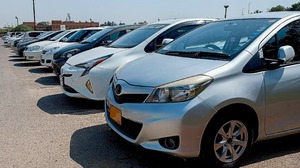Rate cuts have been more than welcoming for car buyers, and it shows in improving sales across the industry. In 10M, a 40 percent rise in cumulative sales for passenger cars, SUVs, and LCVs indicates the industry is on the mend—from a massive slump, no doubt, but definitely recuperating. Passenger cars in 10MFY25 recovered 32 percent, but it was LCVs and SUVs that shone—up 69 percent from last year.
This is still behind FY23 and FY21, and significantly down from sales during FY22. This year was always going to be a slow recovery, as gradually returning appetite—which refers to not just desire but the ability to make a purchase—is being driven by better inflation levels and falling interest rates.
This is not to say that the SBP is fully prepared for a resurgence in automotive demand. If it were, the regulator would have loosened the regulatory noose on car financing terms that were much more relaxed in FY22.

The freeze on financing for imported cars continues—so do the high equity requirements and shorter loan tenors. Average monthly passenger car sales during the current year stood at roughly 8,300 versus 6,300 last year (10M) and almost 8,900 the year before that.
The real growth in LCVs/SUVs is visible in average sales too—selling upward of 2,800 units per month this year, versus last year’s 1,600 and 2,700 the year before that. From Hyundai’s fairly decent volumes in Santa Fe, Porter, and Tucson, to Toyota doubling its Fortuner and Hilux sales, to Sazgar’s Haval taking control of more than a third of the market (excluding Ravi sales), the climb is steep, and it is outperforming past outcomes.
At a time like this, it makes sense that the smallest and the largest segments are outpacing the rest. Alto alone sold 1.2 times the total LCV and SUV sales. In terms of volumes, there is no beating this compact car. Suzuki workshops are working overtime. Advance payment is 100 percent (unlike other popular vehicles like Yaris or Civic), there’s an “own” of roughly Rs300,000 to get the vehicle immediately, and buyers will pay the price differential in full if there’s a bump at delivery.
These terms are stringent and yet, volumes are racking up. It remains the biggest bang for buck in the market, even at the ridiculously high price it’s selling for today.
On the other end are the big engines dominating both roads and market share. To a great extent, any price is fair in this segment—as long as the vehicle is competitive and delivers performance. This is the segment where assemblers can actually get creative, and those who have are seeing their sales shoot up.
In a market that has been so starved for choice and variety, and one that is drawn to imported used vehicles like moth to flame, assemblers better up the ante come FY26. Because if the government goes through with its promise to liberalize the import policy—should it be so gumptious—it’s game over, or at least game pause, for a lot of these.




















Comments